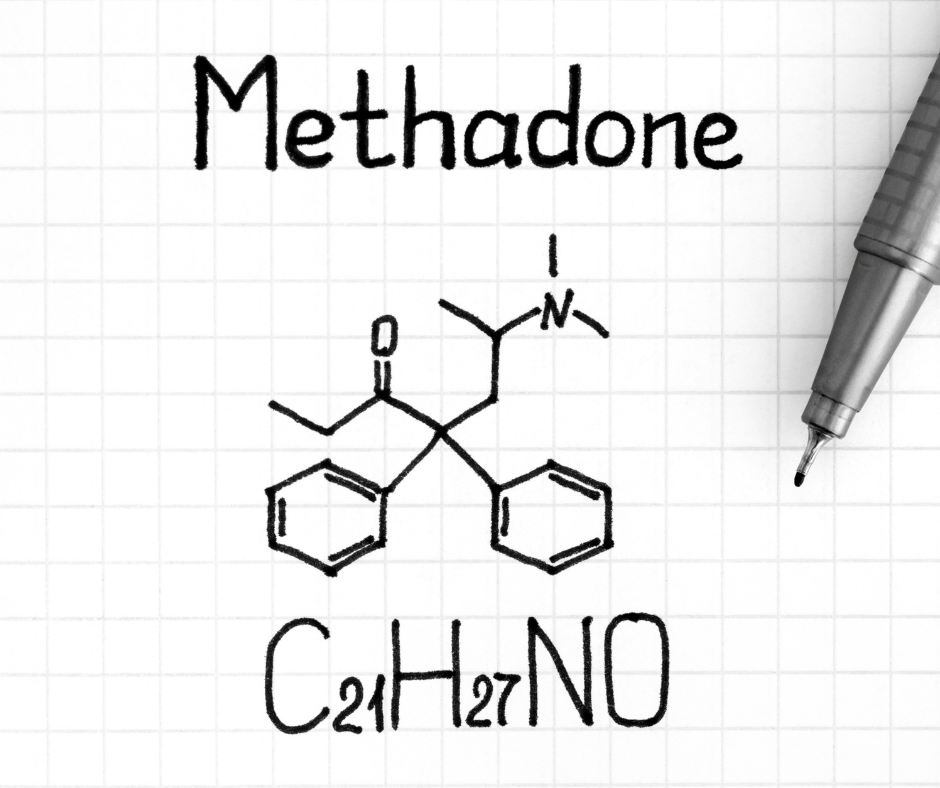Searching for opioid addiction treatment? Discover effective methods, including Medication-Assisted Treatment (MAT) and essential therapies, to help you or a loved one start the recovery journey.
Key Takeaways
- Medication-Assisted Treatment (MAT) is the most effective method for opioid addiction, combining medications like Suboxone with behavioral therapy to improve recovery outcomes.
- Choosing the right medication is crucial, with options including Suboxone for flexibility, Methadone for structured programs, and Naltrexone to prevent dependency risks.
- Therapeutic interventions, particularly Cognitive Behavioral Therapy and motivational approaches, are essential in supporting recovery by addressing both psychological issues and addiction behaviors.
What is the most effective treatment for opioid addiction?
When it comes to treating opioid addiction, Medication-Assisted Treatment (MAT) stands out as the most effective approach. MAT combines FDA-approved medications such as Suboxone with behavioral therapy, addressing both the physical and psychological aspects of addiction. This method has been proven to significantly reduce relapse rates and improve overall health outcomes for individuals with opioid use disorder (OUD).
Why MAT is considered the gold standard
MAT is considered the gold standard for opioid use disorder treatment due to its comprehensive approach. Combining medications like methadone and buprenorphine with counseling, MAT effectively manages opioid cravings and withdrawal symptoms. Research shows that individuals undergoing MAT have a significantly reduced risk of overdose compared to those not receiving treatment. This establishes MAT as a crucial public health strategy for combating the opioid epidemic, which continues to fuel overdose deaths across the country.
MAT’s effectiveness increases when integrated with additional therapeutic services like behavioral therapy, which offers holistic support. Evidence strongly supports MAT’s efficacy in reducing opioid use and improving overall health outcomes for those with opioid use disorder.
Suboxone vs. Methadone vs. Naltrexone
Choosing the right medication is a critical aspect of treating opioid addiction. Suboxone vs Methadone is a common comparison among treatment options, as each medication offers unique benefits tailored to different recovery needs.:
- Suboxone: A combination of buprenorphine and naloxone, excels in outpatient flexibility and discourages misuse through its formulation.
- Methadone: Requires administration through certified clinics and provides a more structured but tightly regulated treatment option.
- Naltrexone: A long-acting opioid antagonist that avoids dependency risks but requires a full detox before starting.
Here’s a quick comparison:
How does opioid addiction treatment work?
Opioid addiction treatment is a multi-stage process that involves a combination of medications and therapeutic interventions tailored to the individual’s needs. The journey typically begins with an initial evaluation and diagnosis, followed by detox and withdrawal management within an opioid treatment program.
Subsequent stages include medication administration, counseling, relapse prevention, and long-term support.

Initial evaluation and diagnosis
The initial evaluation for opioid use disorder involves a comprehensive assessment of the patient’s history, symptoms, and risk factors for substance misuse. This includes evaluating the patient’s opioid use history, mental health, and any co-occurring disorders to inform an effective treatment plan. Diagnostic criteria for opioid use disorder are based on the presence of specific symptoms outlined in the DSM-5, such as persistent opioid use despite negative consequences.
Screening for co-occurring health issues like HIV and hepatitis is recommended during the evaluation, particularly for intravenous drug users. Urine drug screenings for opioids are crucial both before starting treatment and at subsequent visits to monitor compliance and illicit use.
Detox and withdrawal management
Detoxification is the first step in the recovery process, aiming to manage opioid withdrawal symptoms and ensure patient safety. This process may involve:
- Medications such as buprenorphine or methadone to alleviate symptoms and make the detoxification process more manageable.
- Medically supervised detoxification that can occur at various levels of care.
- Tailoring the detoxification process to individual needs.
However, detox alone does not constitute a treatment for opioid use disorder. It must be followed by appropriate long-term treatment strategies. Successful detoxification programs aim to alleviate withdrawal discomfort and connect patients to further treatment options. Patients who undergo detoxification without a follow-up treatment plan are at a higher risk for relapse and overdose.
What are the main types of opioid addiction treatment programs?
Opioid addiction treatment programs can be categorized into several types, including:
- Inpatient
- Outpatient
- Telehealth options Each is designed to meet the specific needs of patients. These programs primarily include:
- Medication-assisted treatment
- Counseling
- Various forms of behavioral therapy.
Inpatient rehab programs
Inpatient rehabilitation programs provide a structured environment where individuals live on-site while receiving comprehensive care for opioid addiction. Patients reside at the treatment facility, allowing for continuous supervision and a structured routine. Daily activities typically include:
- Individual therapy sessions
- Group therapy sessions
- Self-help group participation
- Skills development
Inpatient treatment is often recommended for individuals with severe opioid use disorders, as it offers more intensive support compared to outpatient options. The average duration for inpatient rehab stays is around 30 days, although many facilities provide options for longer stays based on individual needs.

Outpatient and intensive outpatient programs (IOPs)
Outpatient programs allow patients to receive treatment while living at home, with intensive outpatient programs offering more frequent therapy sessions. These office based treatment programs provide flexibility for those who cannot commit to residential care, allowing individuals to engage in treatment while maintaining their daily responsibilities.
Intensive outpatient programs (IOPs) typically involve more frequent treatment sessions, often several times a week, to address the needs of individuals with moderate to severe opioid use disorder. IOPs can serve as a transitional step for individuals moving from inpatient care back to independent living, providing continued support and accountability.
Telehealth and virtual opioid addiction treatment
Telehealth options for opioid addiction treatment enable patients to access care remotely, which improves access and convenience for those unable to attend in-person sessions. Telehealth services have expanded access to opioid addiction treatment, enabling patients to receive care remotely through virtual consultations and support.
This approach significantly enhances access to expand access addiction treatment for individuals in rural or underserved areas, allowing them to connect with healthcare professionals virtually. Patients using telehealth for opioid addiction treatment show a 9.2% increase in adherence to their medication-assisted treatment plans.
What medications are used to treat opioid addiction?
Three FDA-approved medications are commonly used for treating opioid use disorder: medications for opioid use - Buprenorphine, Methadone, and Naltrexone. Each medication serves a unique role in managing opioid cravings and withdrawal symptoms, providing a pathway to treat opioid use disorder and prescription opioids.
Buprenorphine (Suboxone, Subutex)
Buprenorphine, available in forms such as Suboxone and Subutex, reduces opioid cravings and withdrawal symptoms. Suboxone combines buprenorphine with naloxone, which discourages misuse through its unique formulation. Subutex, on the other hand, contains only buprenorphine and is often used in the initial stages of treatment.
Buprenorphine treatment can be administered in various forms, including sublingual films and tablets, as well as extended-release injections. This flexibility makes it a suitable option for many patients, offering a balance of efficacy and convenience.
Methadone
Methadone has been a primary treatment for opioid addiction since the 1960s, acting as a full opioid agonists that alters pain responses in the brain. It is available in oral concentrate and tablet forms, specifically designed for the treatment of opioid addiction. Methadone treatment requires administration through federally regulated clinics, providing a structured and supervised environment for patients.
Methadone is highly effective in long-term maintenance, helping to reduce opioid cravings and withdrawal symptoms for both methadone and other treatments. Despite its benefits, it requires careful regulation due to its potential for dependency and misuse.

Naltrexone (Vivitrol)
Naltrexone, sold as Vivitrol, is an injectable medication used to support recovery from opioid dependence by preventing relapse and reducing cravings. It acts as an opioid antagonist, blocking the effects of opioids and thereby preventing the euphoric sensations associated with their use.
Before starting Vivitrol, individuals must detox completely and be opioid-free for at least 7-10 days to avoid withdrawal symptoms. Patients using Vivitrol in conjunction with counseling show significantly lower relapse rates compared to those who do not use the medication.
What role does therapy play in opioid addiction recovery?
Therapy is essential in opioid addiction recovery as it helps individuals develop coping strategies, address underlying issues, and enhance motivation for sustained recovery. It addresses both the psychological and behavioral aspects of addiction, providing a comprehensive approach to treatment.
Cognitive Behavioral Therapy (CBT)
Cognitive Behavioral Therapy (CBT) focuses on modifying negative thought patterns and behaviors related to opioid use, facilitating the development of effective coping strategies. CBT has shown effectiveness in treating opioid use disorder, particularly for patients with prescription opioid dependence, by promoting better abstinence outcomes.
CBT teaches coping mechanisms to manage triggers and stressors associated with opioid addiction. This therapy encourages the development of healthier behaviors and thought processes in individuals seeking recovery from opioid dependence to reduce pain.
Contingency Management and Motivational Interviewing
Contingency Management (CM) utilizes rewards to encourage positive behavior changes, while Motivational Interviewing (MI) enhances individuals’ motivation to commit to their recovery goals. CM is based on providing tangible rewards to patients for achieving specific behavioral goals, such as abstaining from drug use.
Motivational Interviewing is designed to enhance a patient’s intrinsic motivation to change by exploring and resolving ambivalence towards treatment. Studies have found that MI can increase the percentage of patients who continue treatment after six months.
How to choose the right opioid addiction treatment center
Choosing the right opioid addiction treatment center involves assessing:
- Program quality
- Licensing
- Staff credentials
- Patient reviews
Accreditation serves as a reliable indicator of a treatment facility’s quality and effectiveness.
Accreditation and evidence-based care
Accreditation from reputable organizations such as the Joint Commission and the Commission on Accreditation of Rehabilitation Facilities (CARF) ensures that a treatment center meets high operational and care standards. These accreditations demonstrate compliance with stringent standards set by independent accrediting organizations, providing a reliable indicator of a facility’s quality and effectiveness.
Accredited treatment centers are more likely to offer a higher standard of care, as they are subject to regular evaluations by external experts who assess their adherence to established benchmarks. While not mandatory, accreditation can significantly enhance the overall safety and effectiveness of care offered at addiction treatment facilities.
Integrated care for co-occurring disorders
Integrated care for co-occurring disorders is crucial when choosing a treatment center. Many individuals with opioid use disorder also suffer from mental health conditions such as depression, anxiety, or PTSD. Treating these underlying mental health conditions alongside addiction is essential for effective treatment and long-term recovery.
Programs that offer integrated care provide comprehensive treatment services, addressing both substance use disorders and co-occurring mental health services administration issues. This holistic approach ensures that all aspects of a patient’s health are addressed, leading to better outcomes and reducing the risk of relapse.
What is the cost of opioid addiction treatment?
The cost of opioid addiction treatment can vary significantly depending on the type of program and location. The average expense for drug rehabilitation is approximately $13,475 per individual. Costs for outpatient rehab can range from $1,400 to $10,000 for a 30-day program, averaging around $5,700.
Inpatient rehabilitation typically costs between $5,000 and $20,000 for a 30-day program.
Insurance and Medicaid coverage
Insurance coverage for opioid addiction treatment varies significantly based on the provider and plan specifics. Key points include:
- The Affordable Care Act requires coverage of addiction treatment under essential health benefits, expanding access to treatment services for many individuals.
- Medicaid typically covers many aspects of opioid use disorder treatment, including inpatient and outpatient services.
- Eligible individuals can receive care with minimal out-of-pocket expenses.
Medicare also includes coverage for counseling and therapy related to opioid use disorder, which can be delivered in-person or virtually. Patients without insurance may access state-run facilities which can offer free or low-cost treatment options.
What are the risks of untreated opioid addiction?
Untreated opioid addiction poses significant risks, including severe pain, opioid overdose, and even death. Chronic pain disorder opioid addiction significantly impacts mental health, often resulting in anxiety, depression, and other psychiatric disorders, along with euphoric and sedative effects. Opioid abuse significantly exacerbates these issues.
Additionally, untreated addiction and substance abuse can lead to criminal behavior, relationship breakdowns, and increased socioeconomic challenges.
Rising fentanyl risk
The increasing prevalence of fentanyl in the illegal drug market has escalated the risk of overdose, making fentanyl addiction a critical concern for public health interventions. Fentanyl is substantially more potent than traditional opioids, making even small amounts potentially lethal. The presence of fentanyl in counterfeit pills and other substances increases the danger for users who may be unaware they are consuming it, especially at higher doses.
Illegally manufactured fentanyl is a leading factor in the ongoing overdose crisis in the United States. Many overdose victims may unknowingly consume fentanyl due to its presence in counterfeit pills or illicit drugs.
Bottom Line: Opioid addiction treatment
In summary, opioid addiction treatment is a comprehensive process that involves a combination of medications, therapeutic interventions, and supportive care. Medication-Assisted Treatment (MAT) is the gold standard for treating opioid use disorder, effectively reducing relapse rates and improving health outcomes. Choosing the right treatment program and addressing co-occurring mental health conditions are crucial for successful recovery. With the right support and treatment, individuals can overcome opioid addiction and lead fulfilling lives.
FAQs about opioid addiction treatment
Can I quit opioids without medication?
Quitting opioids without medication is possible but significantly more challenging and carries a higher risk of relapse. It is advisable to consider Medication-Assisted Treatment (MAT) for more effective management of cravings and withdrawal symptoms.
How long does recovery take?
Recovery takes varying amounts of time based on individual circumstances and the severity of the addiction; while some may see improvements in a few months, others may need extended treatment and support.
Is relapse common in opioid addiction recovery?
Relapse is indeed a common aspect of the recovery process for those overcoming opioid addiction. It should be seen as a setback rather than a failure, emphasizing the need for ongoing treatment and support.
Can I work while in treatment?
Yes, many outpatient and intensive outpatient programs are structured to accommodate individuals who wish to continue working while in treatment, with options like telehealth providing additional flexibility. This allows you to manage your responsibilities effectively during your recovery.
What should I look for in an opioid addiction treatment center?
When selecting an opioid addiction treatment center, prioritize those accredited by reputable organizations like the Joint Commission or CARF, and ensure they provide integrated care for co-occurring disorders with experienced, credentialed staff. This approach greatly enhances the effectiveness of your treatment.
















